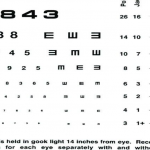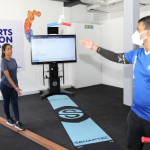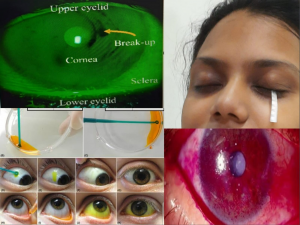Introduction
Binocular balancing is a crucial procedure in optometry that ensures both eyes work together harmoniously to provide clear and comfortable vision. It involves adjusting the refractive power given to each eye during an eye examination so that neither eye is dominant over the other. This process is essential for maintaining optimal visual performance and comfort in everyday activities such as reading, driving, and using digital devices.
Understanding Binocular Vision
Binocular vision refers to the ability of the eyes to focus on an object and create a single, three-dimensional image. This ability is critical for depth perception, spatial orientation, and the ability to perform tasks that require precise hand-eye coordination. Any imbalance in the visual input from each eye can lead to symptoms such as eyestrain, headaches, blurred vision, and double vision.
The Need for Binocular Balancing
Correcting Refractive Errors: Refractive errors like myopia, hyperopia, and astigmatism can differ between the eyes. Binocular balancing ensures that corrective lenses compensate appropriately for these differences, allowing for clear vision without straining one eye more than the other.
Preventing Eye Dominance: When one eye dominates, it can lead to suppression of the weaker eye’s input, which over time, can cause amblyopia or “lazy eye.” Binocular balancing encourages equal visual input from both eyes, preventing the development of such conditions.
Enhancing Depth Perception: Balanced binocular vision is essential for accurate depth perception. This is especially important for activities that require precise spatial judgment, such as driving or sports.
Reducing Visual Discomfort: An imbalance in visual input can lead to discomfort and symptoms such as headaches, eyestrain, and fatigue. By ensuring both eyes contribute equally to vision, binocular balancing helps alleviate these issues.
The Process of Binocular Balancing
Binocular balancing is typically performed after determining the best corrective lenses for each eye individually. The process involves several steps:
Monocular Refraction: Each eye is refracted separately to find the best lens power for clear vision. This ensures each eye is corrected for its specific refractive error.
Binocular Refraction: Both eyes are then assessed together to ensure that the correction provides comfortable binocular vision. This may involve slight adjustments to the lens power found during monocular refraction.
Balance Tests: Various tests, such as the duochrome test or the fogging method, are used to ensure neither eye is over-accommodating or under-accommodating. The patient is asked to compare the clarity of images seen by each eye to find the optimal balance.
Final Prescription: Once balance is achieved, the final prescription is written, ensuring both eyes work together seamlessly.
Importance in Various Age Groups
Children: For children, binocular balancing is crucial to prevent the development of amblyopia and other vision problems. Early intervention can correct imbalances and ensure proper visual development, which is vital for learning and daily activities.
Adults: In adults, binocular balancing is important for maintaining clear and comfortable vision, especially with the increased use of digital devices that can strain the eyes. Proper balance helps reduce symptoms of digital eye strain and fatigue.
Elderly: As people age, changes in vision can occur, such as presbyopia or cataracts. Binocular balancing can help manage these changes by providing clear and comfortable vision, improving the quality of life for the elderly.
Impact on Quality of Life
Balanced binocular vision significantly impacts an individual’s quality of life. It enhances the ability to perform daily tasks efficiently and comfortably, reducing the likelihood of visual discomfort and fatigue. Proper binocular balance is also crucial for safety, particularly in tasks that require depth perception, such as driving.
Conclusion:
Binocular balancing is an essential aspect of comprehensive eye care, ensuring that both eyes work together to provide optimal vision. It plays a critical role in correcting refractive errors, preventing eye dominance, enhancing depth perception, and reducing visual discomfort. By addressing binocular imbalances, optometrists can help individuals achieve clear, comfortable vision, improving their overall quality of life. Whether for children, adults, or the elderly, the importance of binocular balancing in maintaining visual health cannot be overstated. Regular eye examinations and appropriate corrections are key to ensuring balanced binocular vision and preventing potential vision problems.









